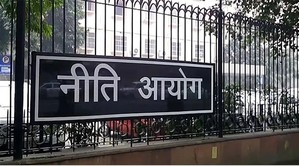New Delhi, 13 July (IANS). The Sustainable Development of North East Region presents the correct picture of the 2023-24 edition of the North East Region due to better data systems, coverage of districts on a large scale and high participation of states.
The 2023-24 edition of the Sustainable Development Target Index of the North East Region stated that there was a lot of development in the North Eastern areas and all the districts of Mizoram, Sikkim and Tripura have achieved the ‘front runner’ status.
The Hannathial of Mizoram has emerged as a top performance district. States like Nagaland and Tripura have performed balanced and strong at various goals.
Compared to the first version, the ratio of districts in the leading category has increased from 62 percent to 85 percent in 2023-24.
This improvement is the result of efforts made under initiatives such as national flagship schemes, better localization and aspirational district program.
The Sustainable Development Target released on July 7 by the NITI Aayog and the Ministry of North Eastern Region Development in collaboration with the United Nations Development Program (UNDP) is based on the first report of August 2021.
This latest version monitors the performance being done at 15 of the 17 Sustainable Development Goals (SDGs) by the districts of eight Northeast states.
It includes 121 districts out of 131, which is more than 103 districts of the first edition. The data of this index has also improved, with 84 indicators (41 central and 43 states), which reflects better coordination and reporting.
The objective of the Sustainable Development Goals adopted by the United Nations in 2015 is to reduce poverty, improve healthcare and education, ensure clean water and employment and create a more just and equal world by 2030.
NITI Aayog leads national efforts in India, connects these global goals with government schemes and works closely with all ministries.
The United Nations team in India supports this process by ensuring inclusion and strong financial assistance.
This index not only ranks districts, but also highlights the deficiencies, challenges and inequalities within and within the states.
It aims to encourage competitive federalism, support local planning and improve data systems.
-IANS
ABS









